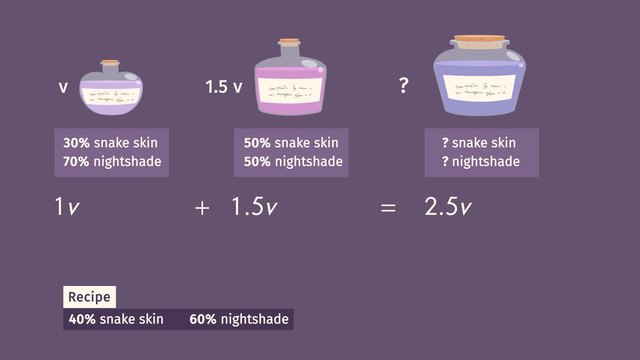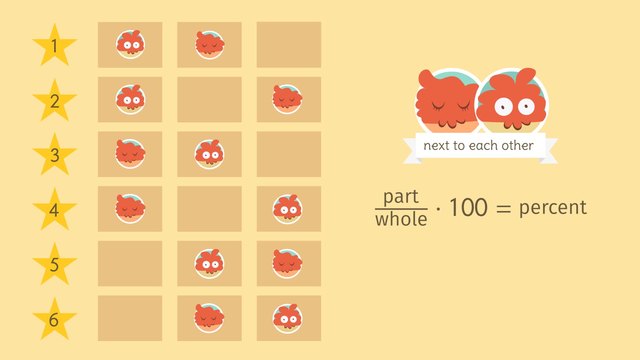Describing Patterns in Scatter Plots


Basics on the topic Describing Patterns in Scatter Plots
Title: Scatter Plot
Scatter Plot Introduction
A scatter plot is a type of graph that shows the relationship, or association, between two different sets of data, which we call bivariate data. By looking at a scatter plot, we can see patterns such as how the data points cluster, if there are any unusual points (outliers), and whether the relationship is positive, negative, linear, or nonlinear.
Understanding Scatter Plot
A scatter plot helps us see if there's a link between two variables. For example, it can show if one thing increases, does the other thing tend to increase too? This is a positive association. Or if one decreases as the other increases, that's a negative association. When the points don't show any obvious pattern, we say there's no association. If the points make a straight line, that's a linear association. If they form a curve, it's a nonlinear association.
Scatter Plot Example
Example Problem:
Create a scatter plot for the following data that shows the number of hours students studied and their test scores:
| Hours Studied | Test Score |
|---|---|
| 1 | 50 |
| 2 | 60 |
| 3 | 65 |
| 4 | 70 |
| 5 | 80 |
Solution:
- Draw a graph with two axes: horizontal for hours studied and vertical for test scores.
- Mark each pair of values as a point on the graph.
- Observe the pattern that the points make.
Scatter Plot - Guided Practice
Scatter Plot - Your Turn!
Example Problem:
Plot the following data on a scatter plot:
| Hours Studied | Test Score |
|---|---|
| 1 | 80 |
| 2 | 78 |
| 3 | 75 |
| 4 | 70 |
| 5 | 65 |
Scatter Plot Summary
Scatter plots are a useful way to visualize the relationship between two variables. By plotting bivariate data and analyzing the pattern of points, we can determine if there is an association—whether it's positive, negative, linear, or nonlinear. Understanding scatter plots can help us make predictions and find trends in the data.
Transcript Describing Patterns in Scatter Plots
Kai is getting excited, but also nervous about his first keytar performance in front of hundreds of people. Let's rewind time first and learn more about, describing patterns in scatter plots to discover different relationships in the events leading up to the big day. To review, a 'scatter plot' is graph that displays the relationship between two sets of data. We can find patterns between the x and y values that define their relationship and make predictions. The relationship has a positive association, when both the x and y values increase. For example, the more time you spend exercising, the more calories you burn. The relationship has a negative association when the x value increases, and the y value decreases. For example as the temperature outside increases, hot chocolate sales decrease. No association means that the x and y values have no relationship. For example, age has no effect on the number of siblings you have. Some scatter plots have 'outliers', which is a point that does not fit the pattern. Clusters are data points that form a group. Let's get back to Kai's big keytar performance! Leading up to the big day, Kai practiced weekly. Each week, he recorded the hours he practiced as the x variable, and compared that to his weekly assessment score y. This scatter plot shows the relationship between the number of hours Kai practiced and the score on his weekly assessment. Let's describe any patterns we see in this scatter plot. This scatter plot has a positive association, you can see the points are trending upward, and as the x value increases, the y value also increases. There is also one outlier in this graph when Kai practiced for five hours, his score was less than twenty-five percent and this one does not fit the pattern. This scatter plot also happens to have a cluster of points. What has Kai learned from this pattern? The more he practices, the higher his assessment score will be. On the day of the performance, Kai along with the band, will ride a bus to the performance. The drive is over twenty miles, and this scatter plot shows the relationship between the miles driven and the amount of gas left. This scatter plot shows a negative association since the points show a downward pattern. There are no outliers or clusters. The relationship is that as the x value or miles driven increases, the y value or gallons of gas in the tank decreases. When the bus ran out of gas, they stopped at a gas station. During the stop, the band members took a survey and made a scatter plot showing the relationship between their ages x, and the number of snacks they packed y. Pause the video here and identify the pattern of ages to snacks. There is no association between the ages and snacks. Also, there are no outliers or clusters. This means that how old you are has no effect on how many snacks are packed for a bus ride. To summarize, a scatter plot displays a relationship between two data sets which we can then analyze. The relationships can either be positive, negative or have no association. We can also identify outliers and clusters in a scatter plot to help us learn more about the data. Oh! Shhhh, get ready, here comes Kai!
Describing Patterns in Scatter Plots exercise
-
What is a scatter graph?
HintsA scatter graph displays a relationship between two sets of data.
If you are not sure, count the number of data categories in each graph.
Data plotted into a scatter graph is given a point for two variables.
For example, person A, weight and height, person B, weight and height etc.
SolutionAs a scatter graph displays a relationship between two sets of data, this is the only one which does that.
You can see the y-axis is ice cream sales, and the x-axis is the temperature that day.
-
Find the correlation.
HintsNegative correlation means that as one value increases the other value decreases.
An example of this would be, "as the cakes on the plate decrease, the fuller I would get".
This is a scatter graph with negative correlation.
The $x$ values increase while the $y$ values decrease.
There are three correct answers here.
SolutionThese are all negatively correlated because as one value increases the other decreases.
- miles travelled in the car and the level of petrol in the tank
- sales of winter coats and the temperature of the day
- number of sweets left in the bag and the number of sweets eaten
-
Find the outlier.
HintsAn outlier is different to the other data points.
On a scatter graph it would not follow the trend of the others and would stand out.
An outlier would look like this on a scatter graph.
SolutionTemperature $26^\circ$C, $50$ ice creams sold
It would not follow the pattern of the others on the scatter graph.
-
No correlation.
HintsWhen a relationship has no correlation, it means the two data sets are completely unrelated. They could be easy to spot because they appear a bit silly.
For example, a person's height and the length of time watching TV have no correlation.
The scatter graph looks like this when there is no correlation.
We can see there is no pattern to the data.
There are three answers that have no correlation.
SolutionAll these are unrelated to each other and do not have correlation.
- Hair length and number of hours on social media
- Height and amount of pets a person has
- Number of illnesses a person has had and number of shoes a person owns
-
What type of relationship is displayed?
HintsThere are 3 types of correlation.
Decide which is similar to the data displayed above.
- Positive correlation: as the $x$ value increases, the $y$ value increases.
- Negative correlation: as the $x$ value increases, the $y$ value decreases.
- No correlation: the $x$ and $y$ values do not have a relationship.
We can see from this graph that as the $x$ value increases, the $y$ value increases.
SolutionPositive correlation
As the $x$ value increases, the $y$ value increases.
-
Interpret the scatter graph.
HintsGo across the $x$ axis to $8$ and go directly up to the cluster of points. Estimate where you think the sales of hot chocolate would be if it fitted the pattern of the others.
Remember, this is an estimate so we are following an imaginary line through the middle of the points to get the best estimate we can.
When you go up to the points from $8$, move left from where you think the vertical line would hit a line going through the middle of the points. Take it across horizontally from there to the $y$ axis to read off the estimate for the amount of hot chocolates sold.
SolutionEstimated answer is $100$ to $120$ hot chocolates sold.
From the graph we can see $100$ is a good estimate but it is slightly higher, so $100$ to $120$ seems fair.













